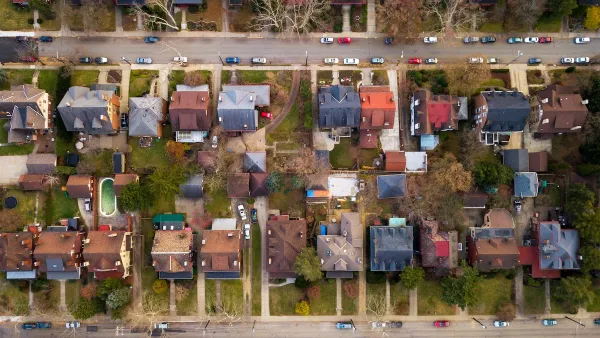Resident services has long been the first to be cut in hard times—but for some housing providers that may be changing.

Asset managers who oversee the finances of an affordable housing stock for about 5 million households have had to reevaluate every aspect of their workflows in response to the economic and operational risks associated with the COVID-19 pandemic. Unlike their counterparts who oversee the portfolios of market-rate housing developments, both for-profit and nonprofit affordable housing providers must maintain cash flows while abiding by rent restrictions, and being mindful of not just the needs of investors, but the needs of their residents, who are more likely to be in rough financial waters.
That’s what Harold Nassau, president of the Consortium for Housing and Asset Management (CHAM) and senior director of asset management at NeighborWorks America, refers to as “the double bottom line.” It’s not about stewing over spreadsheets as you await a monthly meeting with your property managers as much as it is about making sure the well-being of residents remains intact.
That has meant numerous changes over the past 10 months. For starters, meetings with staff on the ground now occur weekly, sometimes biweekly, as the frequency of contact between asset management and property management has increased almost sixfold, Nassau says. (Property managers handle day-to-day operations of a property, such as maintenance, repairs, and rent collection. Asset managers typically oversee a whole portfolio and make decisions about long-term financial viability, major renovations, and recapitalization.)
In addition, resident service coordinators, who have previously been left out of these sorts of talks, are now getting a seat at the table not only as advocates for resident needs, but because the services they provide (referrals, creating community events, social support) are starting to become part of the operating costs of a property instead of secondary expenses funded by leftover profits. During the pandemic, these resident services are not just a lifeline for the individuals, but essential to keeping the resident population overall in good enough physical and financial health to keep the properties viable.
These services are necessary to the long-term viability of the property and long-term stability of the residents, but they are not always recognized as allowable property management expenses by HUD and state housing regulators, Nassau says, something he’d like to see changed. Besides regulations, investors and lenders also need to shift their priorities to include resident services. Nassau says that’s starting to happen as these essential services are finding space within operating budgets. Surveys taken during a CHAM seminar on resident service relations last year show that asset managers’ top priority has been preventing evictions while still maintaining an income stream for their properties. Access to financial and social services was a close second. For 2021, however, access to those services takes the lead.
Making sure proper building functions are maintained still makes up the majority of the workload. For for-profit providers whose portfolios might include market-rate and/or mixed-income housing, the more reliable revenue stream allows for some flexibility in keeping people who can’t pay in their homes. Nonprofits such as Minneapolis-based provider Aeon, which manages 4,400 affordable housing units in the state of Minnesota, however, have thinner margins and a mission to guard, and so have to watch more closely for sudden changes.
“Our operating costs continue to increase just like market-rate housing, but our mission to maintain affordability means the properties are revenue constrained,” says Stacy McMahon, vice president of asset management at Aeon. “Additionally, residents need services to support their housing stability. Service funding is woefully hard to come by.” New expenses like additional cleaning services totaling $1,000 a month in their largest buildings, plus price hikes and delays on developments under construction, have exacerbated the estimated $4 million to $5 million loss in rent revenue Aeon is facing. Their rent nonpayment rate has risen above 10 percent.
“[The] nonpayment [rate] has jumped significantly since the expiration of the unemployment boost,” says Alan Arthur, president and CEO of Aeon.
...
FULL STORY: Is the Pandemic Improving Affordable Housing Asset Management?

National Parks Layoffs Will Cause Communities to Lose Billions
Thousands of essential park workers were laid off this week, just before the busy spring break season.

Retro-silient?: America’s First “Eco-burb,” The Woodlands Turns 50
A master-planned community north of Houston offers lessons on green infrastructure and resilient design, but falls short of its founder’s lofty affordability and walkability goals.

Delivering for America Plan Will Downgrade Mail Service in at Least 49.5 Percent of Zip Codes
Republican and Democrat lawmakers criticize the plan for its disproportionate negative impact on rural communities.

Test News Post 1
This is a summary

Test News Headline 46
Test for the image on the front page.

Balancing Bombs and Butterflies: How the National Guard Protects a Rare Species
The National Guard at Fort Indiantown Gap uses GIS technology and land management strategies to balance military training with conservation efforts, ensuring the survival of the rare eastern regal fritillary butterfly.
Urban Design for Planners 1: Software Tools
This six-course series explores essential urban design concepts using open source software and equips planners with the tools they need to participate fully in the urban design process.
Planning for Universal Design
Learn the tools for implementing Universal Design in planning regulations.
EMC Planning Group, Inc.
Planetizen
Planetizen
Mpact (formerly Rail~Volution)
Great Falls Development Authority, Inc.
HUDs Office of Policy Development and Research
NYU Wagner Graduate School of Public Service





























